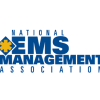This series started with competencies considered by some to be the “softer” side of leadership—building relationships, exercising personal power and finding the right personal motivation to lead. This month turns to an absolutely essential “hard” competency: organizing and planning.
Some authorities, rightfully so, make a distinction between leading and managing. They point out that leading is about people: building relationships, creating motivation and being effective (doing the right things well). Managing, they say, is about tasks: namely, being efficient (doing things right).
The organizing and planning competency is at the heart of good managing. It involves the knowledge and skills to successfully handle the many competing priorities that confront a leader every day. In the past two decades, technology has drastically amplified the need for this competency. Today’s leaders are bombarded daily with boatloads of data, e-mails, text messages and other electronic communication that can easily distract if not handled appropriately.
Time management
Time is a leader’s most precious resource. Its allocation is always a zero sum game (you only get so many effective work hours in a day, and the time you give to one project, person or idea necessarily subtracts from something else). At the center of the organizing and planning competency is a difficult question: What is the best use of my time right now?
The very best time managers have the “helicopter quality”—they’re able to mentally hover above the fray and determine priorities through a continuous process of triaging tasks by urgency and importance. They frequently use a structured process to label tasks and proactively manage priorities (see figure A, attached below). The key is to spend as much time as possible in the “2” quadrant (very important, not urgent). This allows for the best thinking and results while focusing on the mission-critical issues of the organization. These tasks can be the most difficult to confront, however, and many managers fall into the trap of procrastinating on them until the pressure of a deadline forces them to act. Or they may spend too much time in the “3” quadrant, where it’s easy to get caught up with solving easier challenges that are urgent but not all that important.
So how do you determine the relative importance of tasks and issues? Test them in terms of how mission-critical they are. If they impact mission delivery (our fleet is old and in continuous need of repair) or compromise a key value (this is an unsafe situation for our EMS providers), then it’s important for leadership attention. That’s why it’s imperative that every leader fully comprehend organizational purpose and operating principles, as well as his or her job description as it supports the mission. Missions vary with organizations, but there are some benchmark values that most organizations share: quality, innovation, service, finance and safety. Occasionally a value (like safety) will actually trump the mission.
The very best leaders provide real-time guidance to their organization by paying attention to the highest-priority items on the organizational agenda. For good or bad, if the leader behaves like something is a priority, then followers will, too! A leader cannot not communicate . . . everything speaks.
The importance of delegating
The most important time-management tool in a leader’s tool kit is delegation. Lee Iacocca, the celebrated Chrysler CEO, famously said that his real leadership breakthrough came as a sales manager, when he realized that leadership was orchestrating the work of others (not doing it himself). When work came his way, he would always ask, “Is this the best use of my leadership time?” and “Who else can do this?” Imagine yourself as the orchestra conductor, where you must delegate the task assignments to the musicians. This is the ultimate goal of the strategic leader: orchestrating a team of experts.
By the way, you might be thinking right about now that the best time managers must be workaholics, putting in 16-hour days. But burnout, along with diminishing creativity and effective critical thinking, means it’s your responsibility as a leader to take breaks for recreation and exercise. We’ve all felt that surge of energy and creativity that comes with getting away from work for even a day.
Learning organizing and planning skills is relatively easy—it’s the discipline to follow through that often trips up leaders. But Gallup research shows that the reward for being a good manager and a good leader is a 50 percent boost in productivity.
Hiring the organized leader
When looking for a good organizer and planner across a slate of candidates, explore their daily, weekly and monthly schedules. Look for signs of organization, such as use of their calendar, follow-up lists, preparation, delegation as a habit, evidence of project planning, etc.
An excellent test for predicting these skills is the in-basket simulation. In this exercise, candidates are faced with the overflowing in-basket of an absent predecessor. They must sort through multiple competing priorities and do so within time constraints. Later the exercise administrator can evaluate their triage logic and efficiency with organizing and planning tools.
While the leadership competencies such as influence and relationship-building might be seen as more compelling, organizing and planning skills provide the efficiency needed for a sustainable enterprise. Peter Drucker famously refers to “seed corn”—that essential component that must be set aside and reinvested if you hope to have a crop next year. It is organizing and planning that provide the seed corn for successful organizations.
Bruce Griffiths is the president of Organization Systems International in San Diego. His company helps select and develop leaders for such clients as the U.S. Coast Guard, Nike, Disneyand Dow Corning, among many others.












